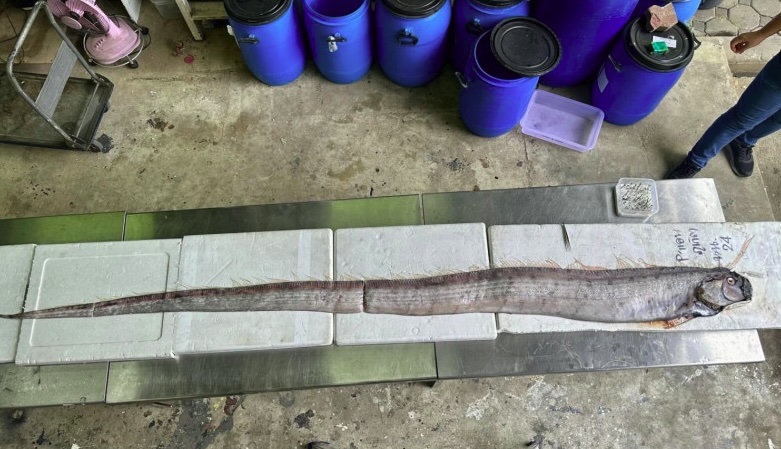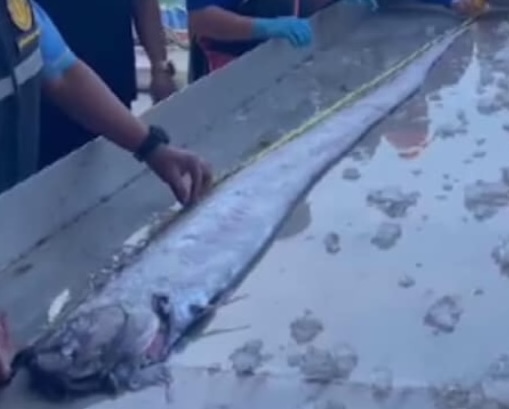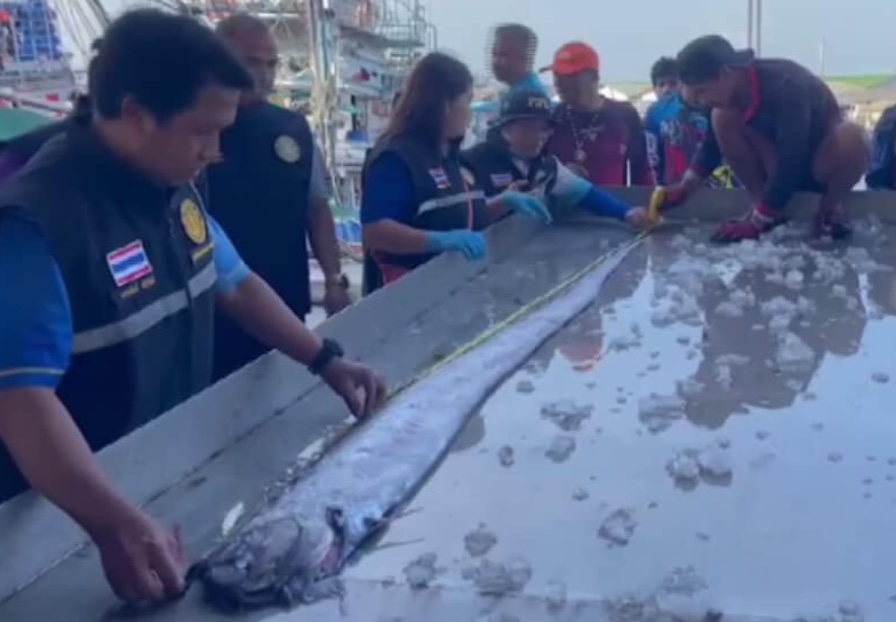A deep-sea oarfish – believed to be a ‘harbinger of natural disasters’ – has been caught by fishermen.
The authorities said they intend to display the nearly 9ft 4ins (2m 80cm) long sea creature in a museum.
The deepwater oarfish was caught in the net of a fishing trawler.
Due to their size and shape, oarfish resemble ‘sea serpents’ and are considered harbingers of earthquakes and misfortune in mythology.
- Advertisement -
The sea beast, which was already dead when it was hauled on board the vessel, was caught in the Andaman Sea about eight nautical miles from Phuket, Thailand.
The fishing crew handed the body over to another boat making its way back to the fishing pier in Thai Mueang as they had yet to finish their shift.
READ MORE: Gardener shocked after tree produces ‘alien’ lemon the size of her face
After being informed of the rare find, regional fisheries chief Sitthiphol Muangsong and officials from the Phuket Coastal Fisheries Research and Development Centre arrived at the pier to investigate.

According to the authorities, the oarfish carcass was in good condition apart from a small wound to its head.
- Advertisement -
The fish weighed 19lbs (8.6 kg).
It was then taken to the country’s National Science Museum for further study.
Experts will also analyse the body of another dead oarfish found off the coast of Satun Province, Thailand, on 4 January this year.
- Advertisement -
That fish measured 8ft 2ins (2m 50cm) in length.
After carrying out their research, officials will place both oarfish on display in the museum for locals to view.
They are considered one of the longest fish in the ocean and can measure up to 55ft (16m 76cm) in length and weigh over 440lbs (199kg)

Their body is scaleless and the skin has a slimy, silvery protective coating known as guanine.
Due to its ability to adapt to different temperatures, oarfish are found in most of the world’s oceans with the exception of the poles.
They live at depths of up to 3,280ft (1,000m) and sightings are not very common.
Sometimes they wash up on beaches after a storm or when they suffer a serious injury.
When they do appear, many locals take it as a sign that a natural disaster is about to strike.


















